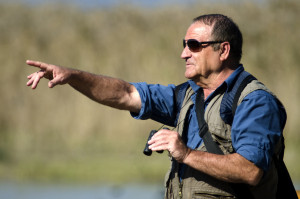 When you think of a pigeon, you probably think of park benches and cities, but pigeons can be found in rural areas, as well. In fact, the white-crowned pigeon nests nowhere else in the United States except for south Florida.
When you think of a pigeon, you probably think of park benches and cities, but pigeons can be found in rural areas, as well. In fact, the white-crowned pigeon nests nowhere else in the United States except for south Florida.
They can be found in the mangrove forests in the Everglades and south Florida. They will nest in the mangroves but spend a lot of time in the wooded areas, as well. They will lay one to three white eggs at time. Both the male and female will incubate the eggs. After hatching, the baby pigeons will leave the nest after 3 weeks. The parents both feed their young “pigeon milk.” Nesting usually occurs in July and August.
This pigeon’s body is a black/gray color with a white-capped head. They have iridescent green feathers on the back of their neck. They are around 13-14 inches in size. The oldest recorded white-crown pigeon was 14 years, 5 months old.
The pigeons are known to move more inland during the day to feed on fruit from the Poisonwood tree. They also eat strangler fig, pigeon plum, mastic, sea grape, seeds, insects, and other tropical fruits.
This pigeon can be easily spotted perching in trees. Unlike many “city” pigeons, they don’t spend much time on the ground. In the Everglades, they can be seen around Nine-Mile Pond, Snake Bight Trailhead, Eco Pond, and Bear Lake Road. Their population. There’s about 7,500 pairs of this pigeon living in Florida.
Along with Florida, this bird can also be found in the Caribbean and parts of Central America.
There is believed to be a global population of 550,000 of this bird. In 2014, they were on risk of becoming threatened or endangered. They are protected in Florida but are still hunted for food in the Caribbean. When mangrove forests are lost due to hurricanes, their habitat is compromised, which is a concern.
If you’re a bird watcher of just a fan of birds, the Everglades is the ideal place to see so many different species, including the white-crowned pigeon. Come explore the Everglades by airboat on a ride with Captain Mitch. Captain Mitch’s Airboat Tours give you a fun and exciting glimpse of the Everglades. To book an airboat ride, click here or call 800-368-0065.
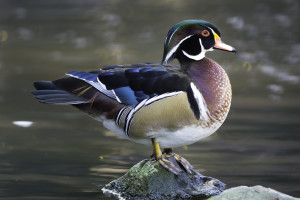 There are numerous species of birds that can be found in the Everglades. At times in the winter, the sight of these birds can look like a scene out of the famous film, “The Birds.” Why? Well, birds migrate down to the Everglades for the winter so hundreds of birds are flying and gathering in the area. For this article, we wanted to focus on one bird so calls the Everglades its home: the wood duck.
There are numerous species of birds that can be found in the Everglades. At times in the winter, the sight of these birds can look like a scene out of the famous film, “The Birds.” Why? Well, birds migrate down to the Everglades for the winter so hundreds of birds are flying and gathering in the area. For this article, we wanted to focus on one bird so calls the Everglades its home: the wood duck.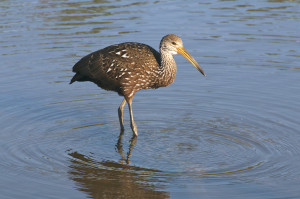 At certain times of the year, the Everglades can look like a scene out of Alfred Hitchock’s The Birds. Thousands of birds flock down to this warm climate to spend the winter and breed. For this article, we wanted to spotlight one species of bird that can be found in the Everglades: the Limpkin. This bird can actually be found in the Everglades year-round.
At certain times of the year, the Everglades can look like a scene out of Alfred Hitchock’s The Birds. Thousands of birds flock down to this warm climate to spend the winter and breed. For this article, we wanted to spotlight one species of bird that can be found in the Everglades: the Limpkin. This bird can actually be found in the Everglades year-round.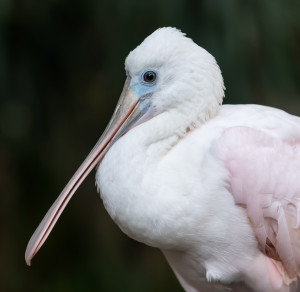 During the winter season, Florida can look like a scene out of Jurassic Park. The sheer scale and variety of birds flocking down here is a sight to be seen. Hundreds of birds of varying species stand side by side bodies of water and make the area their home for the winter/nesting season. One bird that can be spotted in southern Florida is the roseate spoonbill, and it happens to be a threatened species.
During the winter season, Florida can look like a scene out of Jurassic Park. The sheer scale and variety of birds flocking down here is a sight to be seen. Hundreds of birds of varying species stand side by side bodies of water and make the area their home for the winter/nesting season. One bird that can be spotted in southern Florida is the roseate spoonbill, and it happens to be a threatened species.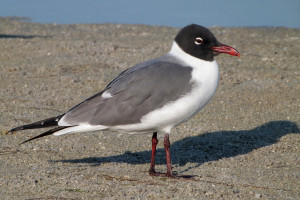 Do you know what the most common gull in the Everglades is? The laughing gull! These gulls are medium in size with long wings and legs. They are a coastal warm-weather species, which is why they can be found hanging around the Everglades year round. Below, we wanted to share some fun facts about this bird.
Do you know what the most common gull in the Everglades is? The laughing gull! These gulls are medium in size with long wings and legs. They are a coastal warm-weather species, which is why they can be found hanging around the Everglades year round. Below, we wanted to share some fun facts about this bird.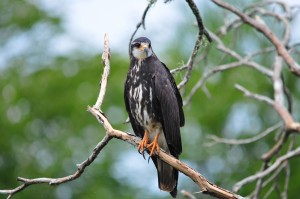 The Snail Kite (formerly known as the Everglades Snail Kite) was listed as endangered in 1967. Fast forward 49 years, this bird is still on the federal endangered species list and state regulators are being accused of not protecting the species properly. In 2000, there were 3,400 kites around and by 2008 there were only 700.
The Snail Kite (formerly known as the Everglades Snail Kite) was listed as endangered in 1967. Fast forward 49 years, this bird is still on the federal endangered species list and state regulators are being accused of not protecting the species properly. In 2000, there were 3,400 kites around and by 2008 there were only 700.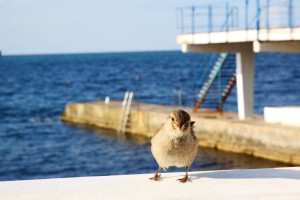 This winter has not been good for many birds in the Everglades, including the Cape Sable seaside sparrow. Its habitat has been threatened by substantial rain and water that was drained from Lake Okeechobee. For the sparrow’s nesting area, water levels were too high. The U.S. Fish and Wildlife Everglades Program knew what would happen once the water was released, but they never anticipated it being as bad as it turned out. Now, officials and biologists are concerned about this bird and its future.
This winter has not been good for many birds in the Everglades, including the Cape Sable seaside sparrow. Its habitat has been threatened by substantial rain and water that was drained from Lake Okeechobee. For the sparrow’s nesting area, water levels were too high. The U.S. Fish and Wildlife Everglades Program knew what would happen once the water was released, but they never anticipated it being as bad as it turned out. Now, officials and biologists are concerned about this bird and its future.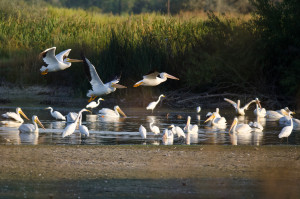 White pelicans are giant, majestic birds that travel and congregate in groups as large as 50. These elegant beasts fly flawlessly despite their weight and wingspan. The average adult white pelican weighs anywhere from 12 to 30 pounds, and its wingspan extends roughly nine feet. Its impressive wingspan is second only to the California condor, which boasts the largest wingspan in North America.
White pelicans are giant, majestic birds that travel and congregate in groups as large as 50. These elegant beasts fly flawlessly despite their weight and wingspan. The average adult white pelican weighs anywhere from 12 to 30 pounds, and its wingspan extends roughly nine feet. Its impressive wingspan is second only to the California condor, which boasts the largest wingspan in North America.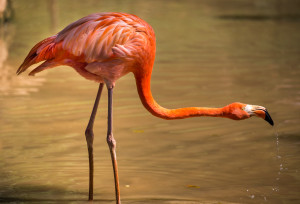 Recently American flamingos made a comeback to South Florida. While the wading bird no longer breeds in the Sunshine State, a population of flamingos returned to the Everglades after over a hundred years of no-shows. Last year, ornithologists counted an astounding 147 flamingos in just one area of the Everglades. They spotted the birds at Stormwater Treatment Area 2 (STA2) in Central Florida.
Recently American flamingos made a comeback to South Florida. While the wading bird no longer breeds in the Sunshine State, a population of flamingos returned to the Everglades after over a hundred years of no-shows. Last year, ornithologists counted an astounding 147 flamingos in just one area of the Everglades. They spotted the birds at Stormwater Treatment Area 2 (STA2) in Central Florida.





